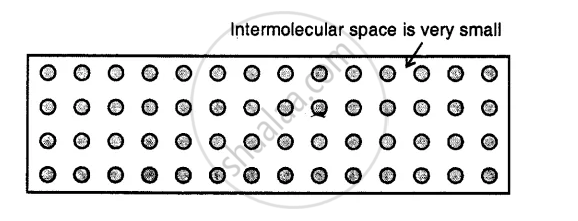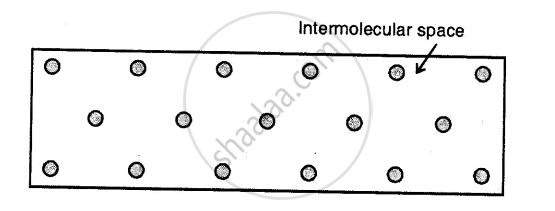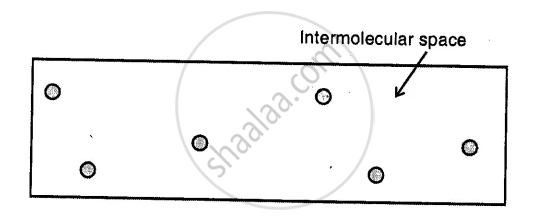Advertisements
Advertisements
प्रश्न
Discuss the three states of matter solid, liquids and gas on the basis of molecular model.
उत्तर
Solids

Here the molecules are very tightly packed that there is no or very less intermolecular space and there is a high intermolecular force of attraction (force of cohesion). The molecules in a solid can only vibrate to and fro about their mean positions. They do not leave their positions.
Liquids

Here the molecules are less tightly packed as compared to solids and also there is a lesser force of intermolecular attraction. The intermolecular distance is greater than that in the solids. Thus, they do not have a definite shape but acquire the shape of the vessel in which they are contained but have a definite volume at a given temperature.
Gases :

APPEARS IN
संबंधित प्रश्न
The process of a gas converting directly into solid is called vaporization.
What is meant by the intermolecular forces of attraction? How do they vary in solids, liquids and gases?
Water cycle is an example of interconversion of states of water. Explain.
Fill in the blank
Liquids have a definite ............
For the following statement, say whether it describes a solid, a liquid, or a gas.
Particles are quite close together.
Give two examples for of the following
Substances which do not change their states.
Give two examples for of the following
Substances which are rigid and not compressible.
Select natural and man-made matter from the following list:
Wood, plastic, silk, medicines, detergents, coal, water, ceramic, cotton, glass, nylon, fruits.
Fill in the blank with the correct word Given below.
Brownian movement is maximum in ____.
Gas like the state of Matter that exists at extremely cold temperatures used in the field of cryogenics.
